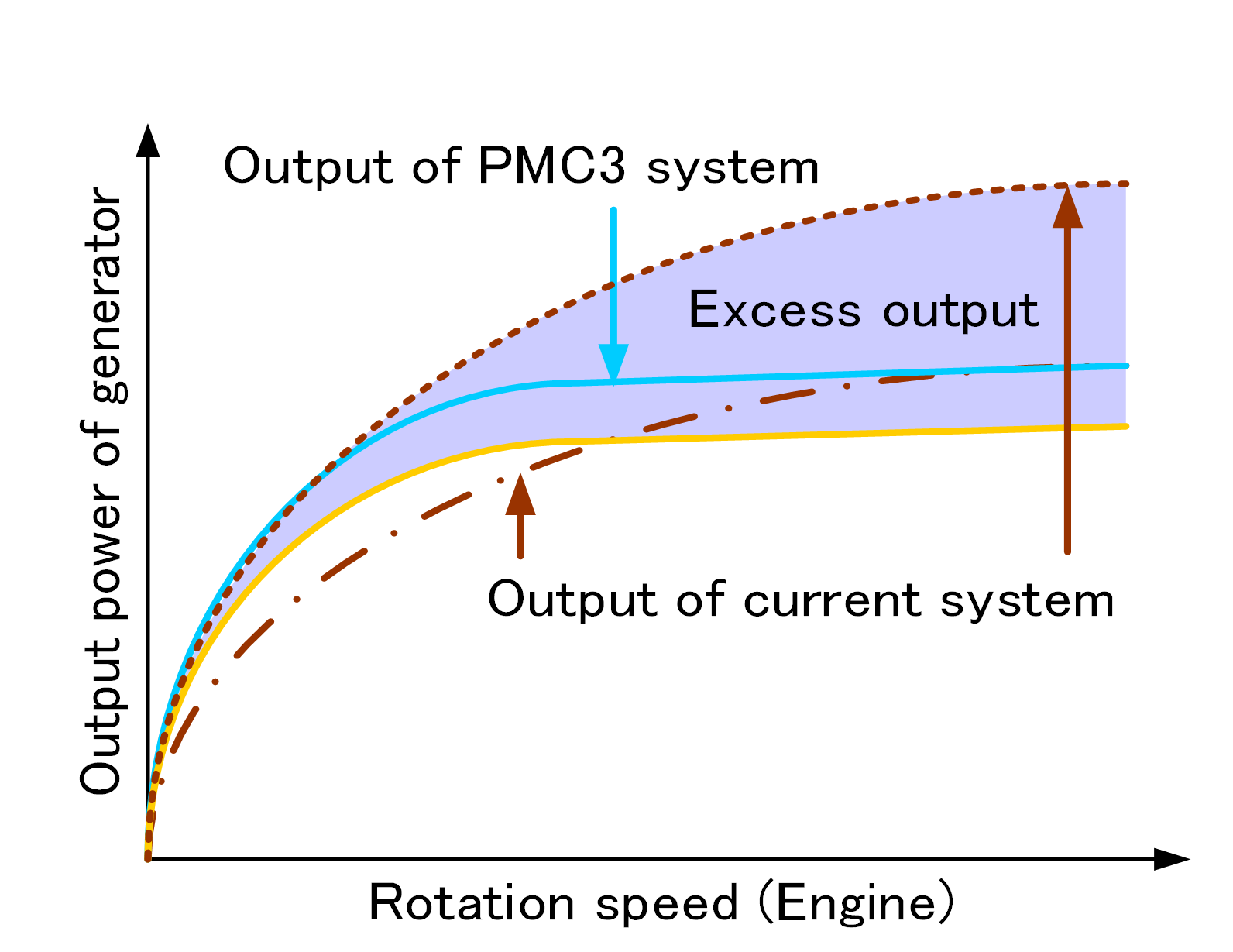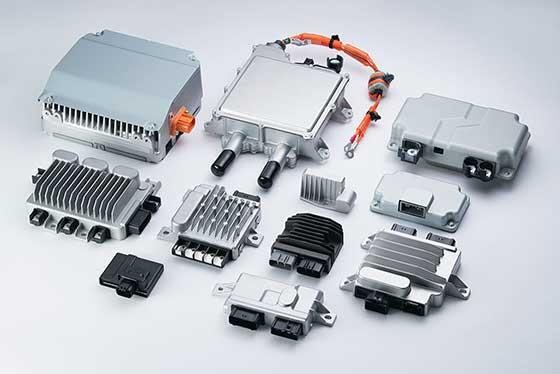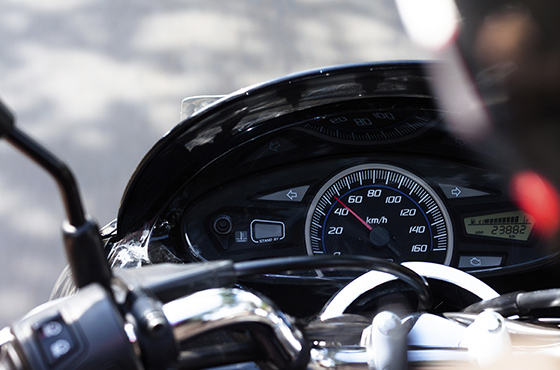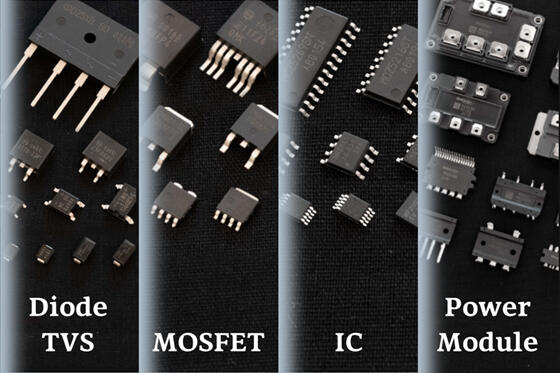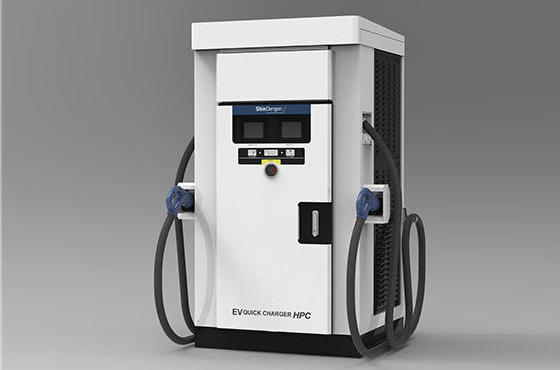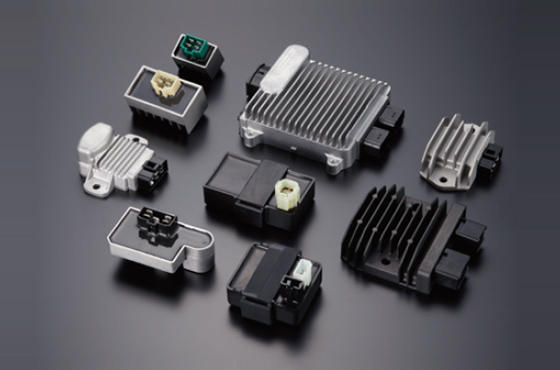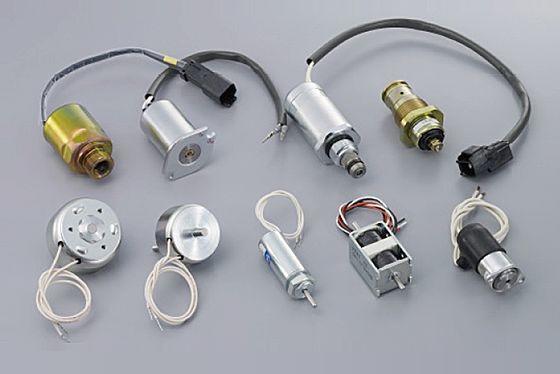Development History
Up until this point, at Shindengen, we have developed three-phase regulators and rectifiers for large motorcycles and other two-wheel vehicles. Recently, there is an increasing demand for higher ACG output due to an increase in sensors that support environmental regulations and due to an increase in the electronic load from the users’ needs. As a result, there is a need for regulators and rectifiers that can support large currents.
Generally speaking, the ACG output becomes bigger as the engine RPMs become higher. And, the demand for a larger output is growing in the low RPM range for engines, particularly during idling. If the output is increased in the low RPM range, it produces excess output that is more than what is needed in the high RPM range and therefore the battery is overcharged. As a result, this surplus energy changes into heat and must be discharged.
In conventional three-phase regulators and rectifiers, the ACG output is just rectified and output. In order to boost ACG output, the ACG needed to be made larger and expensive rare earth elements with superior characteristics, for example, were needed. In addition, since the regulators and rectifiers discharge the heat that they generate themselves, a larger unit is needed. When the physical dimensions of the ACG or regulators and rectifiers become larger, it has many adverse effects, including cluttering the design and layout of the vehicle, increasing the vehicle weight and decreasing the fuel economy.
In order to achieve this, we have developed new regulators and rectifiers that support large currents that are required in today’s markets.
Development Technology
The ACG output rises to the right in the graph relative to the engine RPMs. As a result, the output is insufficient in the low RPM range and is excessive in the high RPM range. In phase control regulators and rectifiers, controlling the conductive phases weakens and strengthens the field where the ACG functions in order to adjust the ACG output. In this way, the output can be boosted in the low RPM range without increasing the size of the ACG, and the output can also be tapered down in high RPM range. The phase control regulators and rectifiers possess excellent output characteristics in the low RPM range. There is a growing demand not just in motorcycles and two wheel-vehicles, but for ships that use a lot of electricity while the anchor is dropped or for SSVs (side-by-side vehicles) equipped with a lot of electronics.
In addition, we achieved phase control without adding new sensors, by adopting sensors that use magnetic pole position detection on the ACG required for phase control, which is needed during ignition and injection control.
By using a structure with all the rectifying elements, which also generate heat with large currents, on the MOSFET, we have been able to significantly reduce that heat when compared to conventional three-phase short regulators and rectifiers (FET).
Expected Effectiveness and Future Measures, etc.
The electronic load (sensors) on motorcycles and other two-wheel vehicles will continue to increase due to environmental regulations for motorcycles and other two-wheel vehicles that have been enacted in various countries throughout the world. A future increase in the demand is expected for more output in the low RPM range. Using phase control regulators and rectifiers can not only boost output without making the ACG larger, but the ACG can also be made larger to further boost the high output.
In addition, the phase control regulators and rectifiers are equipped with a CPU. Going forward, it will be possible to provide higher functionality on the regulators and rectifiers, such as remaining battery power display via communication with meters, and charging control according to the engine load status using communication with the ECU.
As a market share leader and manufacturer of regulators and rectifiers, we can offer system solutions that surpass our competitors.
-
-
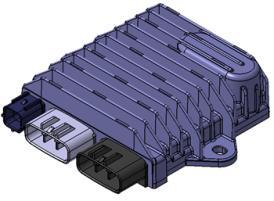
- External view of regulator/rectifier
-
-
-
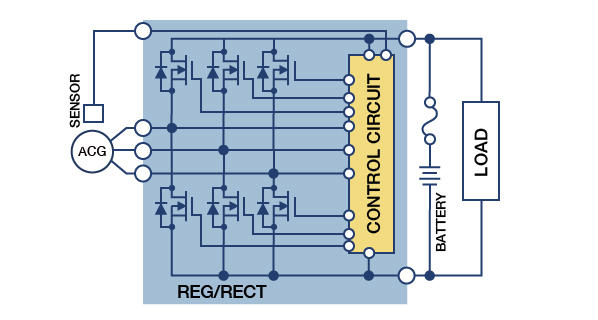
- System layout
-

